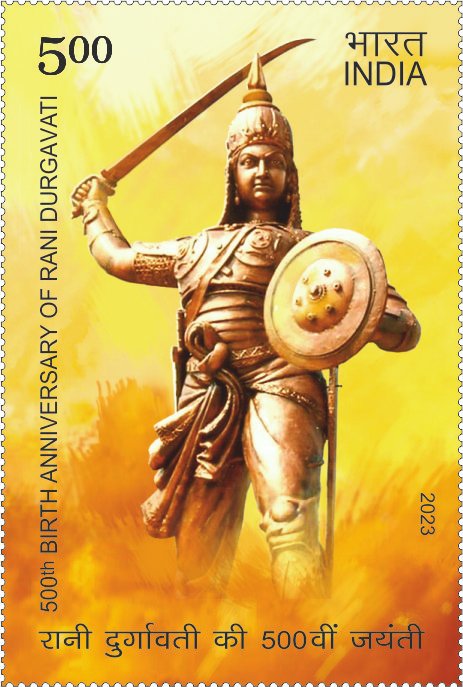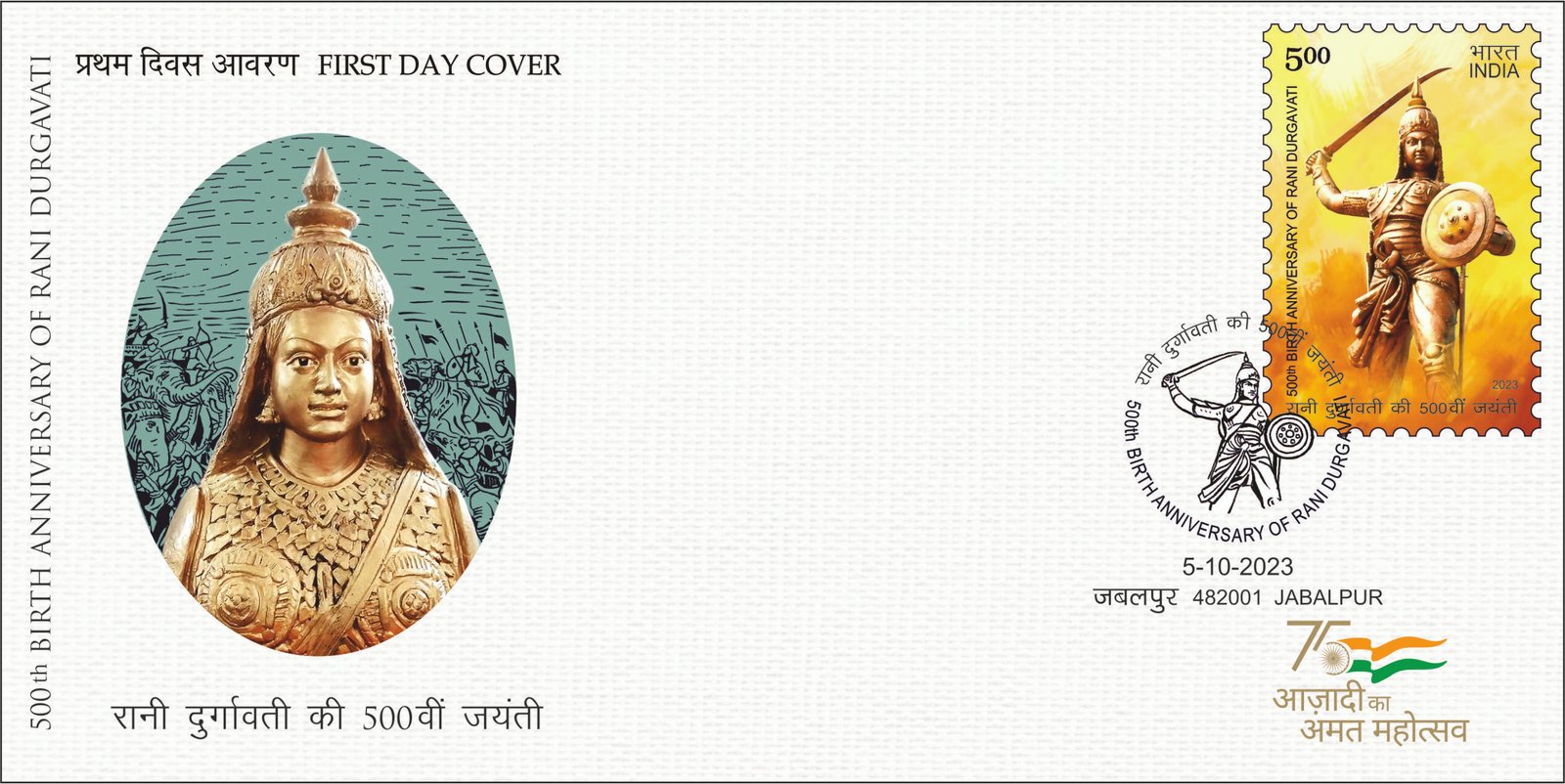500th Birth Anniversary of Rani Durgavati

Technical Data
| Date of Issue | October 5, 2023 |
|---|---|
| Denomination | Rs. 5 |
| Quantity | 201,600 |
| Perforation | 13½ |
| Printer | Security Printing Press, Hyderabad |
| Printing Process | Wet Offset |
| Watermark | No Watermark |
| Colors | Multicolor |
| Credit (Designed By) | Sh. Sankha Samanta |
| Catalog Codes |
Yvert et Tellier IN 3593 Colnect codes IN IN 2023.10.06-01 Michel IN 3936 Stanley Gibbons IN 3864 |
| Themes | Anniversaries and Jubilees | Famous people | Queens | Statues | Women |
The Brave Queen of Garha-Katanga
Early Life and Lineage
Rani Durgavati, born on 5 October 1524 in Kalinjar Fort (present-day Banda district, Uttar Pradesh), was a proud descendant of the illustrious Chandela dynasty of Mahoba, renowned for building the Khajuraho temples. She was named “Durgavati” as she was born on the festival of Durgashtami, after Goddess Durga. At the age of 18, she married Dalpat Shah, son of Gond ruler Sangram Shah of Garha-Katanga, cementing an alliance between the Chandela and Gond royal houses.
Rise as Queen and Administrator
After Dalpat Shah’s untimely death in 1548, Rani Durgavati assumed charge of the Gond kingdom as regent for her minor son, Bir Narayan. With the assistance of her able ministers, Adhar Kayastha and Man Brahman, she skillfully administered her vast kingdom, which stretched 300 miles east to west and 160 miles north to south. She promoted prosperity through efficient governance, constructed reservoirs such as Ranital, Cherital and Adhartal, encouraged learning, and patronized saints like Acharya Bitthalnath of the Pushtimarg sect.
Defender of Her Realm
A courageous leader, Rani Durgavati personally led her forces to protect her people. She successfully repulsed invasions, including that of Baz Bahadur of Malwa, and maintained the sovereignty of her kingdom. Her bravery became legendary when she took on the might of the Mughal army under Asaf Khan in 1564. Despite being outnumbered, she defeated the imperial forces multiple times before finally being overwhelmed.
Martyrdom for Honour
On 24 June 1564, gravely wounded in battle, Rani Durgavati chose death over dishonour. Refusing capture, she stabbed herself with a dagger, becoming an immortal symbol of sacrifice. Abul Fazl, Akbar’s chronicler, described her as “a combination of beauty, grace, and manlike courage.” British officer Colonel Sleeman also praised her as the most revered sovereign of Garha-Katanga.
Eternal Legacy
Rani Durgavati’s memory lives on through monuments, institutions, and popular folklore. A memorial stands at the site of her martyrdom near Jabalpur, where Balidan Divas (Martyrs’ Day) is observed annually on 24 June. Jabalpur University was renamed Rani Durgavati University in 1983, and the Indian Coast Guard’s ICGS Rani Durgavati stands as a naval tribute to her valour. Her story continues to be sung in ballads and tales, inspiring generations.
Commemorative Stamp
On the occasion of her 500th Birth Anniversary, the Department of Posts proudly issues a Commemorative Postage Stamp in honour of Rani Durgavati an enduring icon of national pride, sacrifice, and resilience, whose legacy continues to inspire the youth of India during Amritkaal.
First Day Cover

